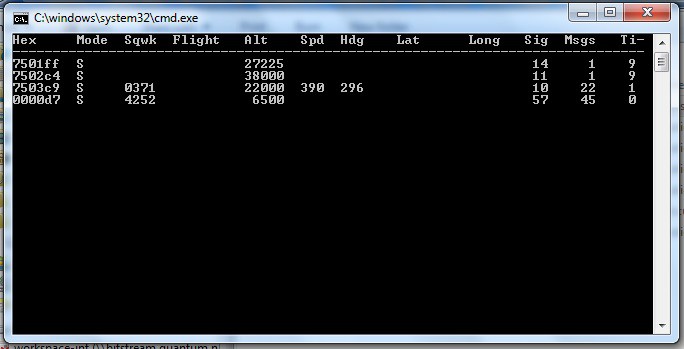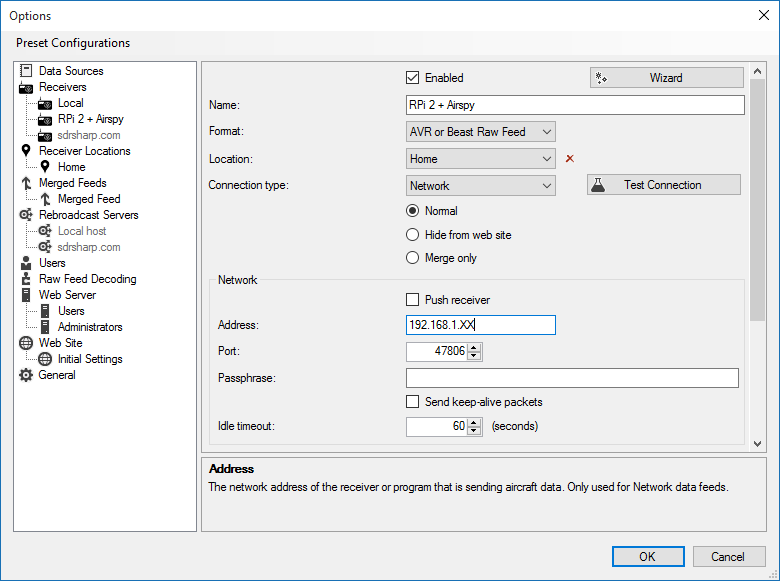


* SSRx Receiver uses advanced signal processing * Uses SQLite open source database engine. * Compatible with third party applications.
#Planeplotter timeout 64 Bit#
Time stamped to 25ns (using 64 Bit timer), for Hi-Precision Multilateration (MLat). To simplify development of users own programs. * Receiver outputs decoded messages with aircraft data. See Planeplotter help which mentions: "Because the station names used in the log file, are derived from the contents of the file called "pchfdl.txt" contained in the \PCHFDL\config\ directory wherever PC-HFDL is installed, you must copy the file "pchfdl.txt" to the PlanePlotter designated Chart directory, so that PlanePlotter uses the same base station names as PC-HFDL.* Real Time 3D / 2D view of Mode-S/ADS-B tracked aircraft. This is because the latest/correct pchfdl.txt file is not copied to the PP Chart directory. Planeplotter shows a new Ground Station as "Unknown"
#Planeplotter timeout zip#
The latest pchfdl.txt file is part of the latest System Table zip file. However when you feed the decoded messages to other programs like PlanePlotter that rely on the correct Ground Station name, it is best to use the file published in this group. The pchfdl.txt file is a text file and can be viewed/modified using Notepad. PC-HFDL uses the pchfdl.txt file in the PC-HFDL/Configs directory to translate the ID to a name. The messages themselfs only contain Ground Station ID's, not names. PC-HFDL shows a new Ground Station as "Unknown" The latest System Table as well as a readable version of it can be found in the FIles section. In between updates you can find that an aircraft is requesting the Ground Station to send the System Table. When a new system table becomes available the ground stations will transmit this new table and PC-HFDL as well as MultiPSK will capture and store this new table. Do not open the pchfdl.dat file! The "DB = 51" in above message indicates that the ground station is using system table version 51 (hex 33). The System Table is stored in a coded format the pchfdl.dat file in the PC-HFDL/Configs directory. The messages only contain numbers, not frequencies so PC-HFDL as well as MultiPSK use the system table to translate this number to a frequency. Then your program is not using the correct system table. GND 10:02:44 UTC SHANNON - IRELAND DB = 51 SV = 0 GS UP HEAVY OFFSET 2 SHANNON - IRELAND UTC LOCKED Active freqs (Hz) 100 KHz SANTA CRUZ - BOLIVIA UTC LOCKED Active freqs (Hz) 113 KHz KRASNOYARSK - RUSSIA UTC LOCKED Active freqs (Hz) 8886 KHz GND 10:02:44 UTC SHANNON - IRELAND DB = 51 SV = 0 GS UP HEAVY OFFSET 2 SHANNON - IRELAND UTC LOCKED Active freqs (Hz) 4 2 SANTA CRUZ - BOLIVIA UTC LOCKED Active freqs (Hz) 6 3 KRASNOYARSK - RUSSIA UTC LOCKED Active freqs (Hz) 3

PC-HFDL shows numbers instead of frequencies You can do that after the program is started, but it is much easier to start the program using a command or batch file which contains the following line: start "" /affinity 1 "PCHFDL.exe" This will start PC-HFDL and assing it to core 0. This can easily be fixed by assigning only one core to the program.

#Planeplotter timeout Pc#
When running on a multi-core PC the logfile can/will contain corrupted data. Examples: and after 9 days without squitters: PC-HFDL Logfile contains corrupted data This also means that when you don't receive Squitters after midnight UTC the clock will continue. Every Squitter message will correct the PC-HFDL clock, but NOT the PC clock. After starting PC-HFDL the first correctly decoded Squitter message will set the clock in PC-HFDL. The message time is based on Squitter messages from the ground station. PC-HFDL Message time is 00:00:00 or greater then 24:00:00 When the frequency is off by 90 Hz it will not decode. You are probably not exactly tuned to the frequency. PC-HFDL showing data burst in the spectrum but no decodes


 0 kommentar(er)
0 kommentar(er)
